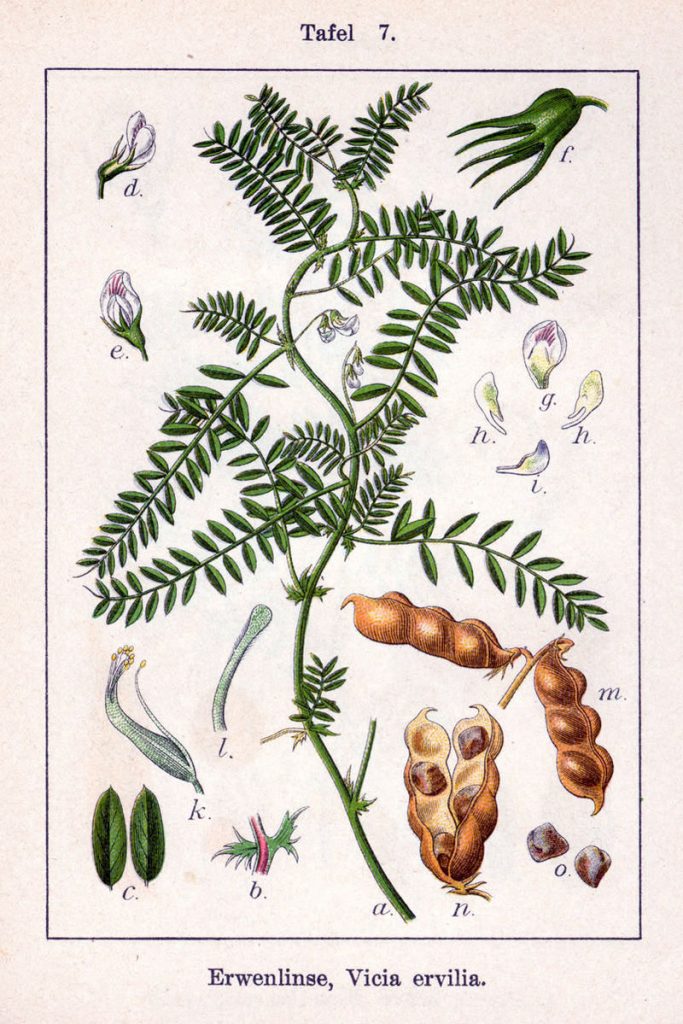
Bitter vetch is an annual and a member of the legume family, Fabaceae, that also includes pea, lupine, and mimosa. Archaeological evidence suggests that the earliest domestication of the plant was in Turkey in the 7th and 6th millennia BC. Since then the plant has spread and is now considered native to southern Europe and western Asia. The ancient Roman naturalist, Pliny the Elder (died 79 AD), notes that it is easy to grow but may be injurious if sown in March or autumn. On the other hand, he says that the plant may have medicinal benefits as the Emperor Augustus claims to have regained his health thanks to the plant. Satire II, VI by the Roman poet, Horace (died 8 BC), contrasting life in the city and country, suggests that bitter vetch is eaten by simple folk in the country but disdained by the wealthier and more sophisticated city people. Carbonized plant material indicates that bitter vetch was present in the ancient Pompeii area at the time of Vesuvius’ eruption. Photo Credit Sturm Wikipedia
Bitter vetch grows about 2-3′ tall and may be erect or trailing. It has few to many branches and pinnately compound leaves with up to 30 narrow leaflets. From mid spring to mid summer, white to lavendar pea-like flowers appear and give rise to linear dry pods containing three seeds.
Size: 2-3′ H
Light: Full sun but tolerates some shade
Soil: Average to low fertility, medium moist, well-drained
USDA Hardiness Zones: Not applicable; plant is an annual